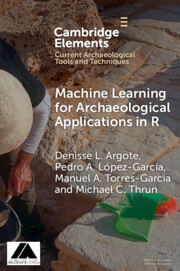Element contents
Machine Learning for Archaeological Applications in R
Published online by Cambridge University Press: 10 December 2024
Summary
- Type
- Element
- Information
- Online ISBN: 9781009506625Publisher: Cambridge University PressPrint publication: 16 January 2025

